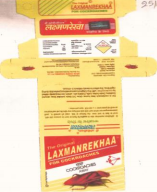Midas Hygiene Industries Pvt. Ltd. v. Sudhir Bhatia
Midas Hygiene Industries Pvt. Ltd. v. Sudhir Bhatia
In the High Court of Delhi, at New Delhi
RFA No. 239, 240 and 241 of 2011
Date of decision: 04.11.2015
Brief facts:
• The Respondent had filed an application before the Copyright Board under Section 50 of the Copyright Act, 1957 seeking cancellation of Copyright Registration of certain labels/packaging of the Appellant as ‘artistic work’ on various grounds.
• The Copyright Board held that the Appellant’s registration vis-à-vis the artistic work, in respect of which it had copyright, was capable of design registration and consequently, the omission to apply for and obtain design protection resulted in the cessation of copyright. The Board, in so concluding relied on a Division Bench ruling of the Delhi High Court in Microfibres v Girdhar; 2009 (4) PTC 519.
• Copyright Board held that the Copyright of the Appellant ceased the moment they used the ‘artistic works’ for the purpose of the packaging, which was capable of design registration.
• Thus, the Copyright Board cancelled registration of few ‘artistic works’ of the Appellant.
• The present appeal was filed before the Delhi High Court under Section 72 of the Copyright Act, 1957 challenging the order of the Copyright Board dated 4th April, 2011.
• The appeal was argued by the Appellant, on the ground that the Board misapplied Section 15(2) of the Copyright Act, 1957 as the only finding given by the Board was qua the applicability of Section 15(2) of the Copyright Act, 1957.
Issues:
Whether the subject work is an artistic work, and if so, itself became embodied in the article making it capable of registration under Designs Act, 2000?
Appellant’s Contentions:
• Copyright Board wrongly applied Section 15(2) of the Copyright Act, 1957 by holding that the works of the Appellant were capable of being registered as designs under the Designs Act and are thus not capable of being protected under the Copyright Act, 1957.
• Use of the copyright as label while packing products (i.e. insect-repellent chalk) did not make the packaging a “design”, which is compulsorily registrable.
• ‘Artistic Work’ in the present case was incapable of design protection and therefore fell outside of Section 15 (2) contrary to that of the decision of Microfibers (supra) where there was an element of inseparability between the design of the article and the artistic element.
• Artistic work cannot be registered under the Designs Act, 2000 because it is excluded from the definition of the expression “design” under the Designs Act.
• Even otherwise the reproduction of the artistic work on a package as a label does not automatically compel the registration of the article namely the package or container as a design.
• It was submitted that there was nothing unique or novel in the packaging over which the label was printed and hence could not become ‘artistic work’ capable of design right protection.
• It was argued that the effect of Section 2(1)(l) and (m) of the Trade Marks Act, 1958 was not considered and that Section 15 of the Copyright Act would apply if (1) when the design is applied to an article and (2) when the artistic work applied to an article is capable of design registration.
Respondent’s Contentions:
• Design in packaging is not excluded from registration as per Class 19 of the third schedule of the Designs Rules.
Court’s Observations:
• The Hon’ble Court observed that this case is concerned with the overlap between three intellectual property rights, which are: copyright, trademark and design.
• The definition of the expression “artistic work” in the Copyright Act is expansive. It includes both a painting and a drawing, asserting that the subject work is an artistic work and consequently capable of copyright protection.
• The absence of originality in this case, which determines if an artistic work is copyrightable is reason enough to negate the Respondent’s submission.
• The Respondent’s argument was that the subject label/work is in fact an artistic work, in such a case, the Board, in this Court’s opinion, fell into error in wholly ignoring the definition of “design”.
• As evident from the language of Section 15 of the Copyright Act, copyright does not subsist in a registered design. However, this is not always so in case of artistic work.
• The copyright in the work can continue to survive independent of the work’s mere fitness for design protection.
• There is no express indication in the Designs Rules, 2001 that a label fixed or printed on a container, or a container or package on which a label amounting to an artistic work is printed becomes capable of registration.
• The statutory definition of design excludes artistic work and labels used as trademarks.
• The labels of both, Krazy Lines and Laxman Rekha are trademarks as well as copyrights and are hence excluded from the definition of design.
• Design registration will not be applicable if the work is not significantly distinguishable from known designs and since in this case there is no unique or novel design of the packaging or its label, the question of design registration does not arise; which in turn disables Section 15(2) from operation.
• The Respondent’s claim in the copyright board was time barred.
• The Board’s cancellations of the Appellant’s copyright registrations were set aside with respect to application of Section 15 of the Copyright Act, 1957. Qua other contentions, such as limitation and locus standi of Respondent, the matter was remanded back to Copyright Board to be heard again.
Author: Meghana Sapuram, Symbiosis Law School, Hyderabad


